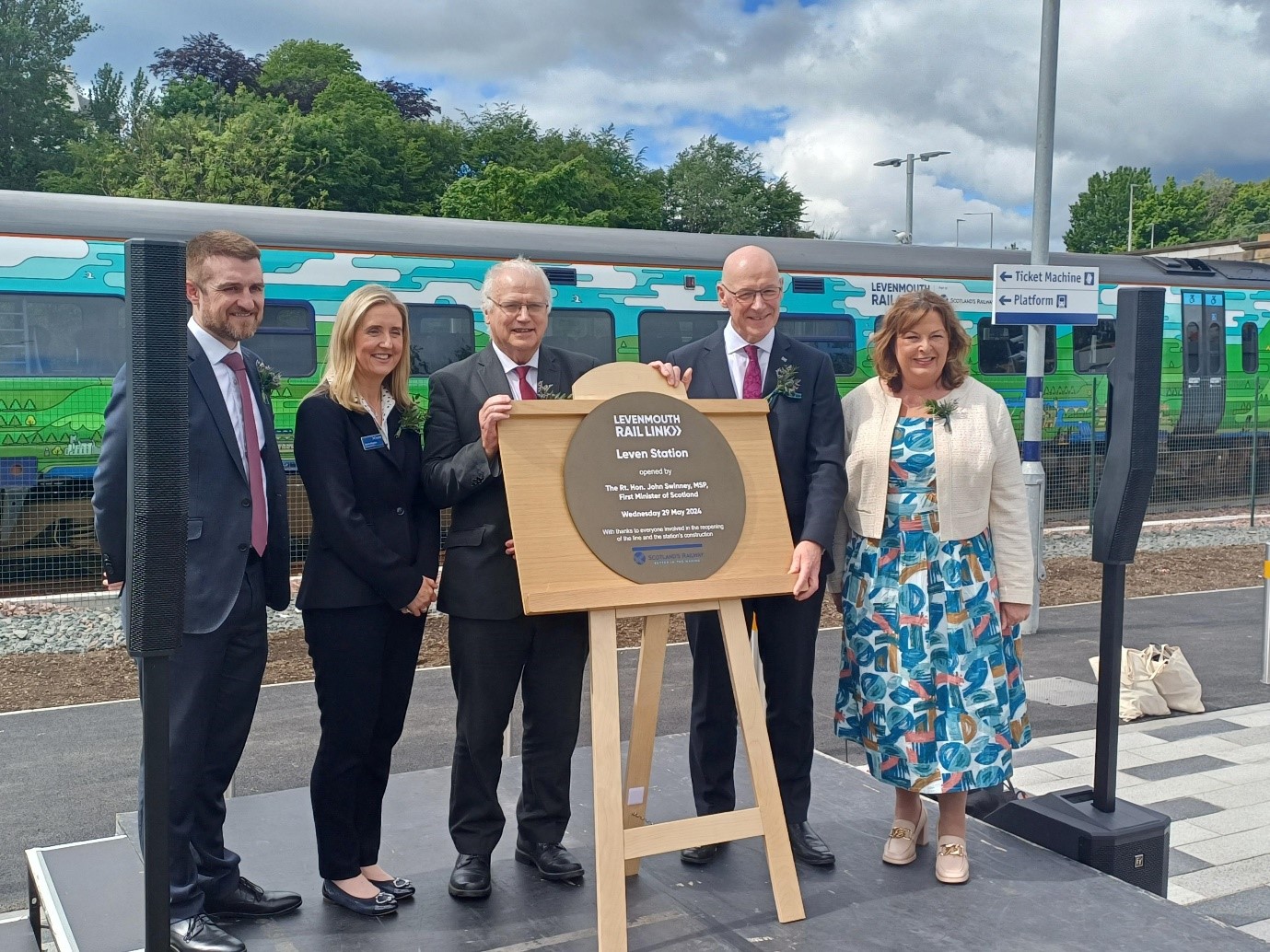Infrastructure
Creating a culture of Active Travel
To increase the numbers of people walking, wheeling and cycling, our communities must put people and place before the movement of motor vehicles. New and upgraded infrastructure that makes active and sustainable travel safer, easier and more convenient is essential to meet our 2030 vision that 'Scotland’s communities are shaped around people, with walking or cycling the most popular choice for shorter everyday journeys'.
Active travel infrastructure can come in a range of different forms, from footways that are smooth and wide enough for everyone's needs, including wheelchair users and people pushing prams, to cycle tracks that are protected from traffic. Walking, wheeling and cycling should be a feasible option in urban and rural areas alike, with the right solutions applied to each area, using local knowledge and expertise.
Transport Scotland funds new and upgraded active travel infrastructure through a variety of programmes as set out below.
Active Travel Infrastructure Fund Tier 1
New for 2024/25, this investment supports the design, development, and delivery of active travel infrastructure measures across all 32 LAs in Scotland, and replaces the former Cycling, Walking, and Safer Routes fund (CWSR).
Local Authorities are provided this funding directly through their General Capital Grant and have the flexibility to use it as they see fit to meet the active travel needs and priorities of people living and working in their communities.
Tier 2 Active Travel Infrastructure Fund
The Active Travel Infrastructure Fund (ATIF) Tier 2 is the primary vehicle for the Scottish Government to fund active travel infrastructure. This shifts from the previous approach where Sustrans administered Scottish Government funding through its Places for Everyone programme. In 2024-25, we launched the ATIF Tier 2 Construction Fund and will be launching the ATIF Tier 2 Design Fund in 2025-26. The ATIF Tier 2 Construction Fund builds upon the Active Travel Transformation Fund (ATTF), which successfully piloted a new approach to delivery. The ATTF funded construction-ready projects across Scotland in 2023-24, delivering them at pace. The tiered model for infrastructure delivery increases flexibility and control for partners, providing direct investment to those with the capability and capacity to deliver at pace.
The ATIF Tier 2 Design Fund replaces the pre-construction phases of the Sustrans Places for Everyone Fund. Both the ATIF Tier 2 Design and Construction Funds are open to applications from Local Authorities, Regional Transport Partnerships (RTPs) and National Park Authorities (NPAs). It supports the ambitions set out in Active Travel Strategies, Local Transport Strategies and Regional Transport Strategies. The Fund can include support for: new segregated walking, wheeling and cycling facilities; new paths; improved access to schools; improved accessibility through dropped kerbs; barrier removal programmes; and new off-road shared-use paths connecting rural towns and villages. Further information on the types of infrastructure that would be eligible for funding is available in the design guidance.
Places for Everyone
Sustrans’ Places for Everyone (PfE) programme (and its predecessor Community Links) has been Scotland’s flagship active travel infrastructure fund since 2010.
Funded by Transport Scotland, Sustrans allocate funding and provide expertise to deliver walking, wheeling and cycling improvements across the country. Taken together, PfE and Community Links have delivered over 450 miles of new or improved walking and cycling paths across Scotland.
The PfE programme will wind down by December 2025. Many of the projects currently being managed on our behalf by Sustrans, will transfer to Transport Scotland as PfE winds down. Transport Scotland will be in direct contact with partners whose projects are being transferred.
Ian Findlay Path Fund
The Ian Findlay Path Fund is delivered by Paths for All. The fund works to build capability and capacity within communities with a view to them being able to use this knowledge and experience to expand their ambitions and take a leading role in identifying and driving forward future projects.
Recently completed projects include the Ardnish Path Restoration Project. Led by the Lower Breakish Grazing Committee and supported by Highland Council, 900m of path between Breakish and Waterloo was resurfaced, widened, and a new bridge built over the Allt Linnidal Burn.
National Cycle Network
The National Cycle Network (NCN) is developed by Sustrans, with Transport Scotland taking an active role in helping them to deliver key new and improved sections of the network.
Sustrans’ vision is for the NCN to be the backbone of Scotland’s network of walking, cycling and wheeling routes, spanning the whole of Scotland.
Alongside Transport Scotland’s support for infrastructure delivery at the LA level, work on the NCN aligns with ambitions for new and improved active travel routes to connect smaller rural communities with nearby towns, and better connections between Scotland’s towns and cities, regions and major gateways.
With nearly half of Scotland’s population living within 1km of the NCN, it provides an alternative to car travel which supports everyday trips, and addresses the climate crisis.
Transport Scotland’s Strategic Transport Project Review 2 (STPR2) set out how and where we should make changes to our transport networks to encourage more people to walk, wheel and cycle more often. Transport Scotland recognises that Sustrans’ delivery activities on the NCN in Scotland contribute across the breadth of STPR2 recommendations on active travel - contributing to cutting carbon emissions, reducing inequalities, improving health, improving our community spaces and supporting sustainable economic growth.
Recently we have supported the delivery of the Water of Leith resurfacing – upgrading 7.7km of NCN from the Union Canal on Lanark Road to Balerno, near Edinburgh:
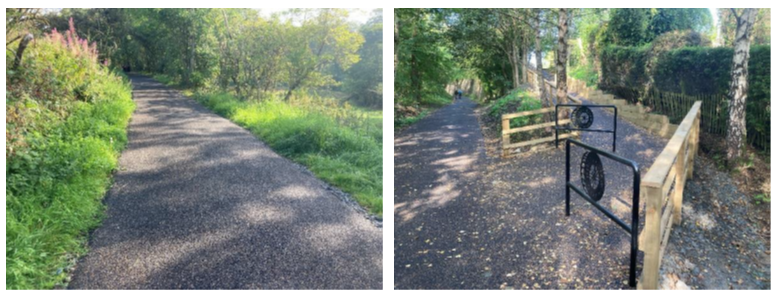
Another recent project has been improvements to a section near Carnoustie in Angus to improve safety.
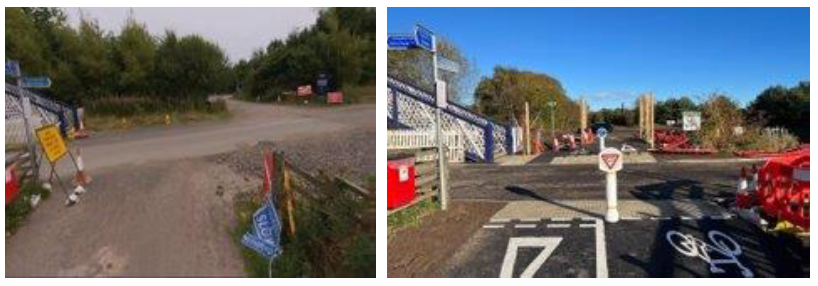
As well as new routes, we work to remove barriers on the NCN with the aim to make the network more accessible for everyone, and easier to walk, wheel, and cycle. Over 400 barriers removed in 2023-24 alone.
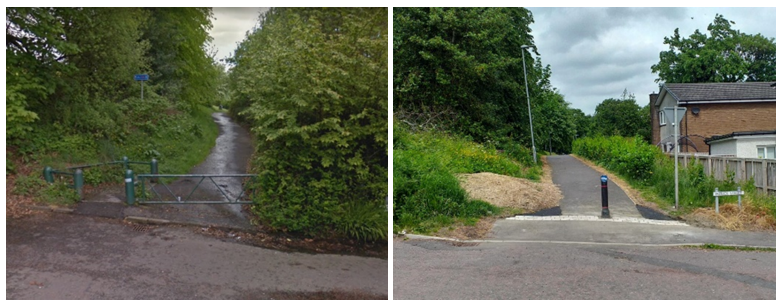
Trunk roads
Through its Trunk Road Casualty Reduction Team (TRCRT), Transport Scotland has been working in partnership with the Trunk Road Operating Companies (OCs) BEAR and AMEY to develop and deliver active travel schemes on the trunk road network since June 2021.
Contributions from the active travel budget have addressed a recognised funding gap. Funding of over £11 million between 2021-22 and 2023-24 has delivered over 24km of new or improved paths, three signalised pedestrian crossings and funding to construct more than 26 active travel infrastructure schemes. Examples include:
- A898/A82 Erskine Bridge - new shared use footway/cycleway – 450m
- A78 Seamill to Montfode - Phases 1 & 2 - upgraded shared use footway/cycleway – 3.35km
- A9 Kessock Bridge to North Kessock – 1.6km of upgrades to the existing shared use path
- A830 Corpach to Loch Linnhe Holiday Park – 900m of new footway
- A83 Minard - Improvements to existing footways in the village and a new footway linking the village to the adjacent Crarae Gardens, a National Trust Scotland site.
- A92 Balfarg to New Inn – Extension of previously constructed shared use foot and cycleway
- A726 East Kilbride – Extension of previously constructed segregated foot and cycle paths linking with local authority network.
Numerous cycle / pedestrian counters have been installed across the trunk road network. The data from these is used to monitor user numbers with a view to measuring the success of new schemes and to assist in prioritising the strategy for the provision of new or upgraded infrastructure in the future.
An example of this is on the A96 between Lhanbryde and Loch Oire where a new shared use facility was constructed early in 2022. Survey data from the new counter indicates up to 60 movements a day whereas before there was no facility.
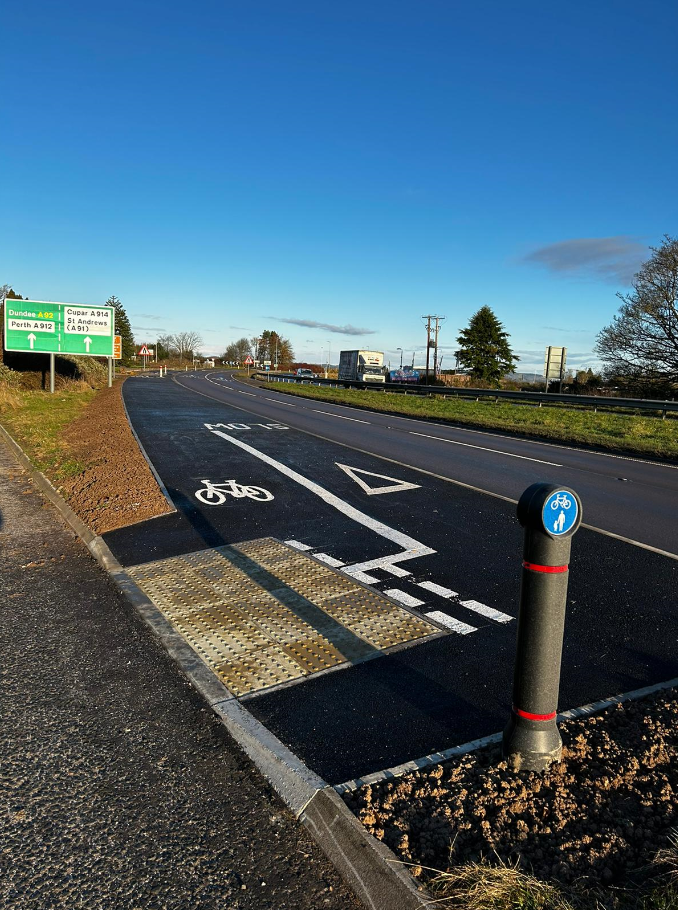
Rail
The Transport Scotland Active Travel programme has supported other parts of the transport portfolio to help deliver shared priorities and outcomes.
Most recently, this includes the new Leven rail line and stations where funding has delivered active travel routes into the Cameron Bridge and Leven stations, as well as two new bridges that provide invaluable connections across communities in the Leven area.
